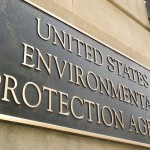The same day AAA reported a five percent increase in gas prices in February and projected the price will keep rising through at least April, the EPA announced new regulations that will cause even more pain at the pump.
The EPA is rolling out strict new rules aimed at dramatically curbing sulfur in gasoline by 2017 – but at what cost? The regulations have left oil companies scrambling to invest in the expensive new technology necessary to achieve the mandated two-thirds reduction to 10 parts per million (ppm) from the current 30 ppm.
This will dramatically increase costs. According to a study from Baker & O’Brien, this move will cost refiners up to $10 billion in capital costs and $2.4 billion in annual compliance costs. This would raise gasoline prices by up to 9 cents a gallon – increasing the price of every product that uses gasoline as an input (i.e. everything).
The EPA of course says that the environmental benefits of this move will outweigh these costs. But upon closer inspection that’s doubtful. Experts claim that the EPA has not provided enough evidence to show that lower sulfur levels will appreciably improve air quality. The fact is that sulfur in gasoline has already been reduced from 300 ppm to 30 ppm in just the last decade – further reductions at such a marginal level are unlikely to make noticeable improvements but are sure to be extremely costly.
“This rule is all pain and no gain,” said House Energy and Commerce Committee Chairman Fred Upton, “This winter’s cold snap underscores just how vulnerable American families and businesses are to any increases in energy costs, and yet the administration is moving forward to raise prices at the pump.”





